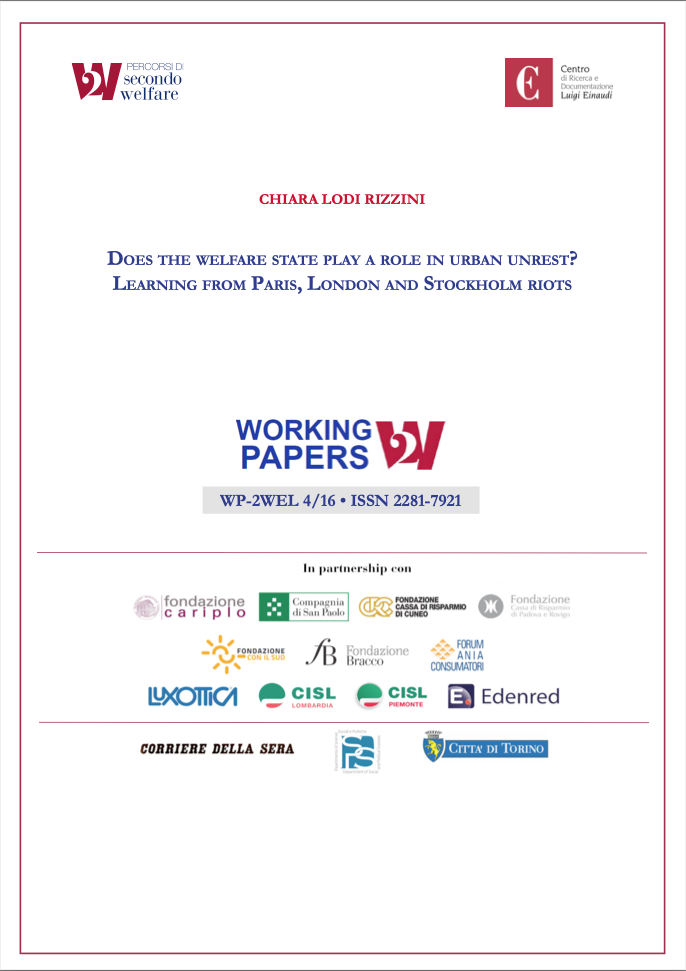The author
Chiara Lodi Rizzini is a researcher for Percorsi di secondo welfare. Her research focuses on the innovation of social provisions in order to tackle emerging social needs and ensure social inclusion, especially in the fields of housing and food poverty. She received a B.A. in International Politics and European Institutions from the University of Parma and a M.A. in Administration and Public Policies from the University of Milan. She has recently published Povertà alimentare in Italia: le risposte delsecondo welfare (con F. Maino, L. Bandera) (2016), il Mulino, Bologna; Verso quale welfare? Il welfare locale tra nuovi bisogni sociali e risorse scarse, in «La Rivista delle Politiche Sociali – Italian Journal of SocialPolicy», n.1/2015, Ediesse; Gli empori della solidarietà nel contrasto alla povertà alimentare, in F. Maino e M.Ferrera (a cura di) (2015), «Secondo Rapporto sul secondo welfare in Italia 2015», Torino, Centro di Ricerca e Documentazione Luigi Einaudi; La ricerca dell’integrazione nelle politiche abitative attraverso alcune esperienze di social housing, in «Welfare e Ergonomia», n.1/2015, Franco Angeli.
Abstract
Paris, 2005. London, 2011. Stockholm, 2013. Different timing, country and social model, but the same dynamic: the police shoot and kill a man belonging to an ethnic minority. The accident triggers the explosion of riots, first in the suburbs, then spreading around the whole city and country. The paper aims at analysing the events from a social policy perspective, focusing on three elements occurring in all of the reported episodes. First, the place, suburbs: riots are geographically very circumscribed, thus showing the persistence of a centre-periphery cleavage often widened by gentrification processes. Secondly, rioters’ age: most of them are under 25, reinforcing some sociologists’ opinion that riots are, first of all, “a youth underclass uprising from destitute neighbourhoods”. Lastly, the high involvement of people from minorities as the result of an incomplete integration process, even in countries such as the United Kingdom and France where immigration is already a long-standing phenomenon. The analysis of these three elements can fruitfully outline that rioters are a part of society living in a sort of “limbo”: they are not in work nor in education, they are not foreign nationals nor citizens of the country where live in, or at least they often do not feel they belong there. This state of things seems to feed feelings of exclusion, injustice and detachment from society, especially in suburbs, which have frequently become worlds apart from the rest of the city and the Nation. Episodes as the ones analysed suggest how the economic crisis is undermining social cohesion and widening the cleavages between the insiders and the outsiders of society, centre and periphery, different generations, migrants and residents. Such dangerous outcomes pose a threat to all of the “worlds of welfare” from “social democratic” Sweden to “liberal” United Kingdom, as well as to “corporative” France.
